×


We have detected your country as:
Please click here to go to the USA website or select another country from the dropdown list.
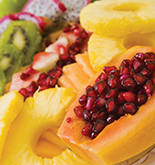
{image_1}If you are like me, the taste of a juicy, ripe mango conjures up visions of a tropical island paradise with glorious beaches and beautiful sunsets. The fruit, however, grows in a number of subtropical areas far from the sea, and Israel is actually the northernmost spot on earth to successfully cultivate it. Hebrew University has developed a variety that is not only popular with Israelis, but is a favorite in European countries as well.
Continue Reading »
{image_1}There is a saying among Israeli cooks: If you want to say “I love you” with food, make memulaim, the Hebrew name for stuffed vegetables. Usually involving peppers or egg plant, this delightful tradition came to Israel in an endless variety of forms from all over the Diaspora. Although a little labor intensive, the following recipe is bound to communicate warmth and welcome to the friends and family around your table.
Continue Reading »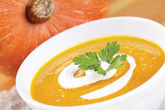
{image_1}As I write this, we have just finished the fall holiday season here in Israel, and as you read it, you may be preparing for the celebration of Christmas, Hanukkah, and the New Year. Many of the foods found on Israel’s holiday table may be very different, but some dishes can easily make the transition. One of those versatile foods with an incredible Jewish history is pumpkin!
Continue Reading »
{image_1}A story is told of a poor man looking into the window of a fine restaurant, watching the very rich inside talking gaily and eating blintzes. When he arrived home, he asked his wife if somehow she could make him blintzes. He just had to have some. She assembled the flour, water, egg… “Oh, my dear, I have no cream cheese,” she said. “Just skip it; make them anyway,” replied her husband. “There’s no honey,” she cried. “Don’t need it,” he replied.
Continue Reading »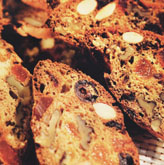
{image_1}Dried fruits and nuts are standard fare on the Middle Eastern table and have been for millennia. Figs, dates, and apricots were delicious, nutritious staples in the ancient Israeli diet, and drying them insured they could be eaten year-round. Today, many a holiday menu is augmented with colorful dishes of these tasty delights, and generations of Israeli cooks have come up with literally hundreds of creative ways to use them in main dishes, salads and desserts.
Continue Reading »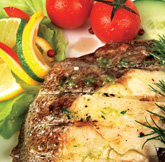
{image_1}Of all the artistic gifts that God has bestowed on His people, that of cooking is probably the most widely appreciated. Combining spices, flavors, and aromas to create a “dish to die for” is indeed an art, and we all know people from whom we covet a dinner invitation because the very thought of the food that graces their tables causes our mouths to water.
Continue Reading »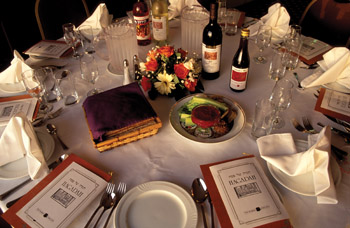
{image_1}Many of us are familiar with the celebration of Passover, even if we aren’t Jewish. Some of us have had the privilege of attending a Passover seder meal in the home of a Jewish friend or participated in a sederconducted as a teaching experience. Many Christians are aware that the Last Supper, as mentioned in the Christian Scriptures, was a Passover seder and are eager to learn about the holiday that was important to Yeshua (Jesus) Himself. As traditions go, Passover has had amazing longevity, originally celebrated by Moses and the Israelites, and has attracted interest from a variety of faith traditions.
Continue Reading »
{image_1} “Snook” was the wife of BFP’s founder, Dr. G. Douglas Young. Though she wasn’t a teacher, writer, or speaker like her husband, Georgina Young was as involved in the work of the Institute of Holy Land Studies—the school Dr. Young founded in Jerusalem—as he was, just in different roles: decorator, homemaker, hostess, cook, and “mom” to students far from home and war-weary Israeli soldiers.
Continue Reading »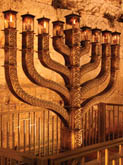
{image_1}It was Hanukkah, last year, when a group of Bridges for Peace staff gathered outside the Old City at Jaffa Gate, early evening. We were guided through the Old City by Tom Brimmer, our CEO’s husband and licensed tour guide. As we began our walk, I realized what a special evening this was going to be. Not only does Tom have a wealth of knowledge and interesting facts at his fingertips, but there was an acute awareness surrounding us of who the Jewish people are. How they love this Land and love to celebrate the holidays and the feasts! Their pride in being Jewish and in their history and culture shines like a light. So began our trail of seeking and admiring the Hanukkah menorahs (hanukkiot).
Continue Reading »
{image_1}When we think of all the creatures referenced in the Bible, especially those mentioned for food, fish probably isn’t the first thing that comes to mind. The sacrificial system which fed the priesthood, the meals prescribed for celebrating the various feast days, and the fatted calf that fed the ancient visitor were all based on red meat. As such, cattle are mentioned many times in the Scriptures. In the earliest references, the use of the word simply means “domesticated animal” and might have included other species. And of course, sheep and goats are referred to literally hundreds of times. No wonder we think of these creatures first.
Continue Reading »All logos and trademarks in this site are property of their respective owner. All other materials are property of Bridges for Peace. Copyright © 2025.
Website Site Design by J-Town Internet Services Ltd. - Based in Jerusalem and Serving the World.